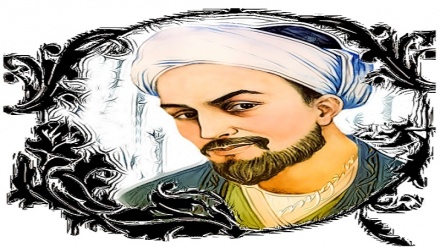Iranian notables, sources of global honor (116)
Today, we become familiar with the prominent Iranian poet of the Safavid era, Abu-Taleb Kalim Kashani.
Abu-Taleb Kalim Kashani is one of the acclaimed and famed Iranian poets of the Safavid era, who was also one of the pioneers of Indian literary style in poetry.
Literature and arts, throughout its history, has gone through many upheavals and developments. The literature of any country goes through changes amid social, political, and cultural developments and changes. The social needs of any community compel poets and authors to use a language beyond the language of their ancestors in order to express different topics. Experts refer to this change in terms of expression as a change in style.
In this case, the artist drifts apart from the style of his ancestors and moves toward another direction. The result of this change of direction and refusal to comply with the previous style is the emergence of another language in literature, which will maintain its own particular and especial terms and features. Farsi literature has also gone through many phases. Throughout the life of Iranian literature, a number of literary styles were innovated for expression of thoughts and views, including the Khorasani, and Nimai literary styles.
By focusing on the developments that each of these literary styles have gone through, one can study the social, political, and cultural topics of importance of the period of time in which a particular literary style has been common, and focus on the related signs of emergence, peak and recession. The Indian literary style is also one of the literary styles of Farsi language which has been shaped as the result of some especial conditions and has been part of Iran’s literary periods, throughout the course of history. The Farsi-language prominent men of letter have composed poems within the framework of this literary style and have left behind valuable legacies for the future generations. One of these celebrated Iranian literary figures is Kalim Kashani, which was a contemporary of Safavid King, Shah Abbas.
Kalim Kashani’s fame led to the obscurity of his personal life. Whenever biographers have mentioned this famed poet, they have not detailed his personal biography.
According to the editor of Kashani’s collection of poems, Parto Baizai: The biography of Kalim has been overshadowed and marginalized by his well-known poetry, while the references to personal life of this Iranian poet in books and biographies are short and brief and similar to one another.
For instance, his father and his place of birth are not known for sure. Kalim in his poems has not said anything about his personal life. Even if someone has written anything about this renowned poet, it has only pointed out this prominent poet’s ethical virtues.
His date of birth is also unknown. However, according to a number of evidences, he was born in 980 AH. Biographers have cast doubts over his place of birth. Some state that he was born in Hamedan, while other believed that he was born in the city of Kashan. Some others opine that he was born in Hamedan and brought up in the city of Kashan. Parto Baizai believes that such discussions also existed in Kashani’s era, while he personally refused to inform others of his place of birth and his life’s particulars.
The well-known author and compiler, Lotf Ali Baik Azar, believes that Kalim was from the city of Kashan. This author has pointed out a number of poems of this well-known poet, in which Kalim has named Kashan as hometown. Meanwhile, another author, Nasr-Abadi, has mentioned a line of poetry composed by Kalim in order to insist this acclaimed poet was born in the city of Hamedan. It is not important for us to know where Kalim was born and where he completed his studies. The importance and significance of Kalim lies in his Iranian nationality.
There is not much known about Kalim’s childhood and adolescence years. However, it is said that he was slim, and despite being well-off, he lived and modest life. Many have praised Kalim’s modesty and ethical virtues, noting that he led a poetic lifestyle.
Kalim acquired sciences by attending the classes of well-known teachers in the cities of Hamedan and Shiraz. A while after completion of his studies, at the age of 24, he took up residence in India throughout the era of reign of Jahangir Nour Ed-Din, the father of Shah Jahan. He lived for a number of years in India, while returning to Iran at the age of 38, in the year 1028 AH. Meanwhile, after residing in Iran for a period of time, he left Iran for India in the 1030 lunar year.
He had resided in India for seven years when Jahangir Shah passed away and his son Shah Jahan ascended the throne in the year 1037 AH. In this phase in time, Kalim gained entry to the Indian king’s royal court. He distributed whatever he earned at the Indian royal court among the poor and the needy.
Kalim has left behind several odes, elegies, and quatrains. His collection of poems consists of around 10,000 lines of poetry.
If we pay a visit to India’s historical monuments, especially the historical sites in the city of Akbar Abad, we can observe Kalim’s poems, written on inscriptions over there. For instance, one can refer to the inscriptions located at Shah Jahan Mosque.
Kalim passed away in the lunar year 1061 in India’s Kashmir region, and was laid to rest in Srinagar.
MR/ME


